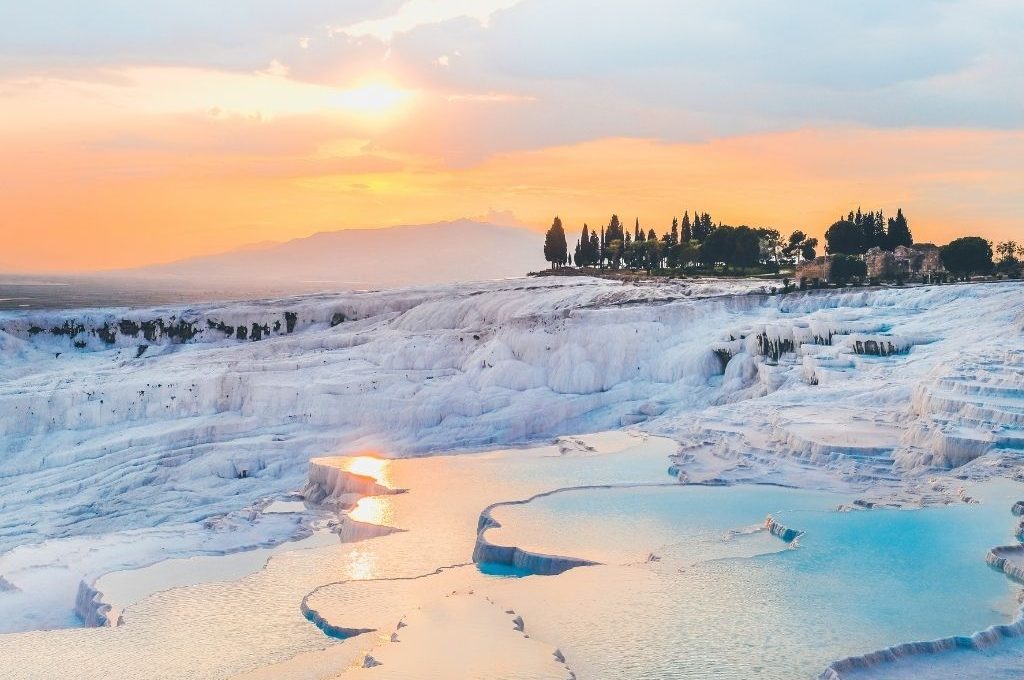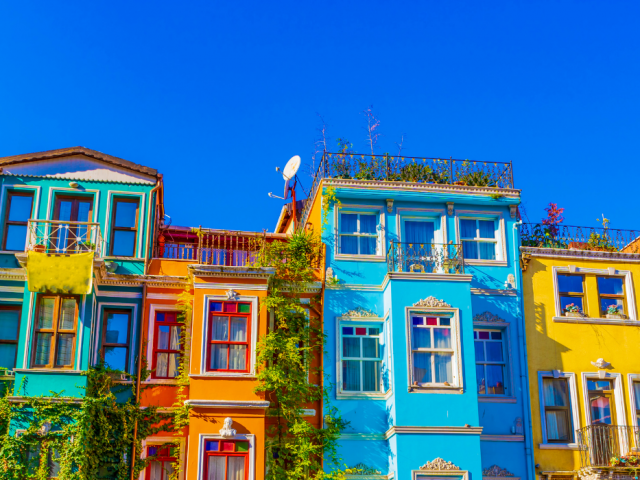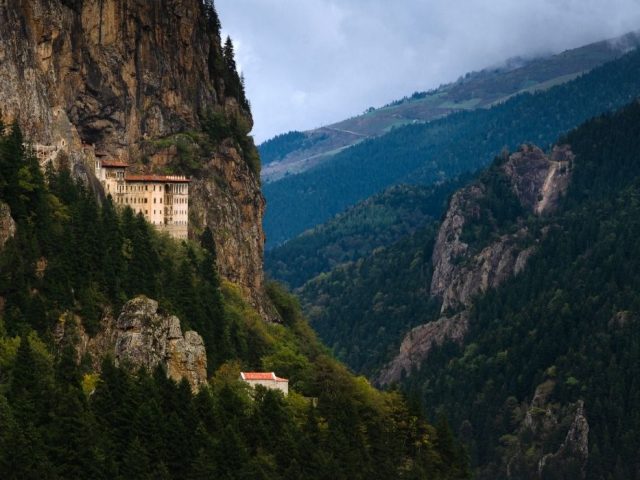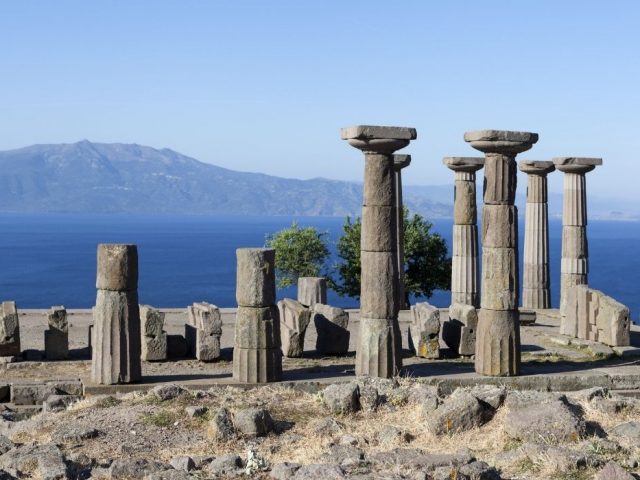We are going to Pamukkale, the city of travertines that we want to take our paints and paint like a child!
Pamukkale got its name from the white travertines formed by calcium oxide. Let’s face it, they really look like cotton! The old name of this place was Hierapolis. The ruins left behind by the city are still standing. You can visit the ancient city of Hierapolis today.
Etymologically, Hierapolis means ‘holy city’. But before the city was founded, this place was already a centre of faith. The Phrygians used the region as a temple before the arrival of Eumenes II. There are also the famous healing waters, which are also associated with faith. The healing brought by the water made Hierapolis a centre for cults. During the Roman period, Philippus, one of the apostles of Jesus, lived and died here. Therefore, it is also an important region for Christians.
Reminder: Don’t forget to download the Piri Guide mobile app to visit Pamukkale step by step with your personal and digital tour guide! 😊
Where is Hierapolis & Pamukkale?
Pamukkale is a district of Denizli province in the Aegean Region. Pamukkale Travertines and Hierapolis Ancient City are located here. The city is about 20 kilometres from Denizli city centre. Pamukkale also contains Çürüksu Stream, one of the tributaries of Büyük Menderes.
Best Time to Visit Hierapolis & Pamukkale?
Although Pamukkale is in the Aegean Region, it does not have a completely Aegean atmosphere. So temperatures may be a little lower than you expect. It is under the influence of the Mediterranean climate, but there are also features from the continental climate. Winter months are quite rainy. Don’t forget your umbrellas and raincoats! However, Pamukkale Travertines should be seen in a period when the weather is clearer, not in a rainy period. May and June can be the perfect months in this sense.
Hierapolis & Pamukkale Places to Visit
We’ve made a list of must-visit places in Pamukkale. Yet, we should remind you that you can find more on Piri Guide mobile app. Piri Guide detects your location, offers you the best travel routes, and starts telling you the hidden stories of wherever you are. All you have to do is to get your headphones or earbuds and follow the path at your own pace. Then, don’t set out for your trip before downloading the digital travel guide!
Ancient City of Hierapolis
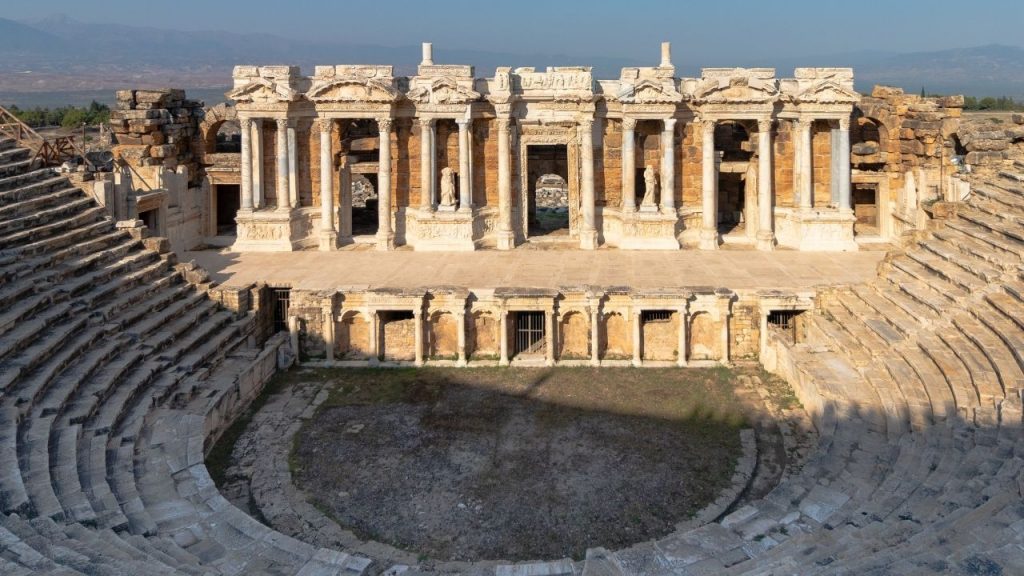
Our first stop is the ancient city of Hierapolis, known as the holy city. This place was included in the UNESCO World Heritage List in 1988 together with the travertines. There is an interesting rumour about its name. The legend says that Telephos, the son of Hercules, woke up one night from a dream. He turned to his wife and said, ‘One day the Aegean will reach its holy city with your name.’ It really happened. King Eumenes II of Pergamon founded Hierapolis in the 2nd century BC in the name of Telephos’ wife.
Telephos’ wife was the queen of the Amazons, the female warriors. Her name was Hiera. Hiera means ‘holy’ or ‘holy queen’ in Greek. Therefore, Hierapolis means ‘holy city’. The ruins of the ancient city are still standing. However, this place was destroyed by an earthquake during the time of Nero. Then it was rebuilt. Therefore, unlike the Hellenistic Period, it bears more traces of Roman and Byzantine architecture.
Hamam Church
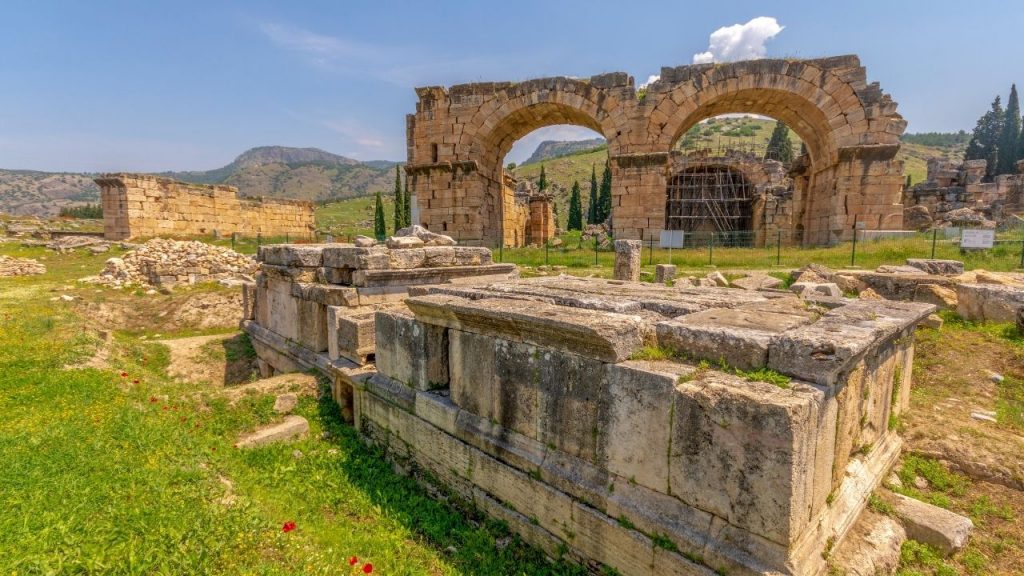
It was built in the 3rd century as a typical Roman bath. But towards the 5th century, the Byzantines turned the building into a church. The church is made of rectangular travertine blocks. The two arched openings you will see during your tour have been preserved very well until today. When the building became a church, these openings were naturally used as church doors.
You can see many Roman Baths in Anatolia. So, why did the Romans build so many baths? Now comes a reason that our mothers would love. Of course, cleanliness. But this cleanliness was not only about the citizens of the city. Whoever would enter the city was asked to enter clean. For this reason, the guests were washed well at the entrance of the city. This was for both physical and spiritual cleansing. The baths were so important for the Romans! They would come here to chat and even make business negotiations. There was even a gymnasium, library and dining hall inside.
Latrina
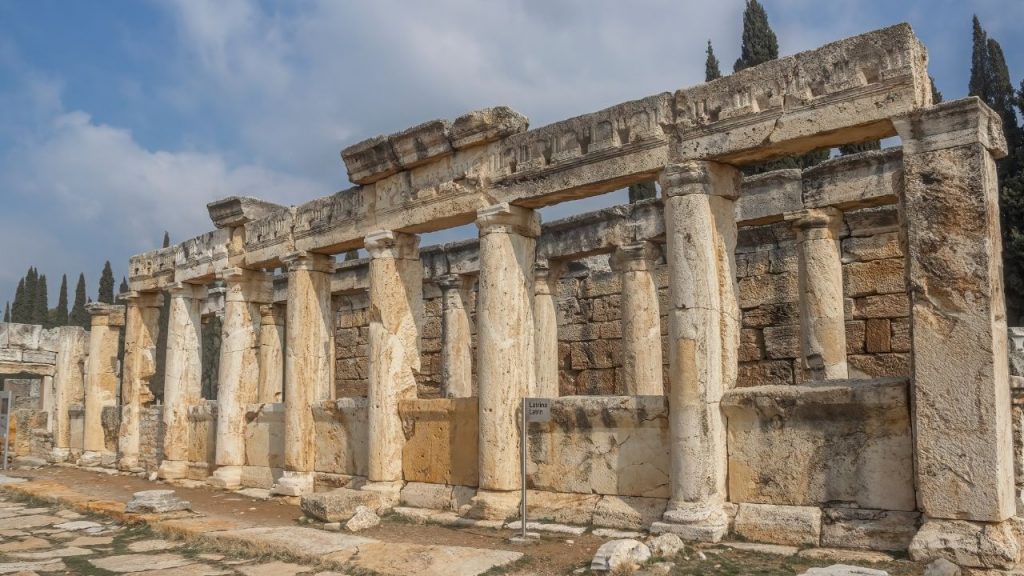
Well, welcome to the public toilets of antiquity!
It sounds weird, we know. Don’t say, ‘Did we just come to the toilet?’ Because latrines were as important as baths. Not just anyone could enter here. Only the rich people of the city would come here. The latrina in Pamukkale is a structure resembling a corridor with a double row of columns. It had two channels, wide and narrow (you can see this during your visit). Dirty water was flowing from the wide part. On top of the channel, there was a marble block with a hole in it. This block worked like a toilet bowl. People were sitting side by side, both meeting their needs and chatting. Yes, now it seems a bit strange… The narrow channel was the part where clean water flowed.
Temple of Apollo
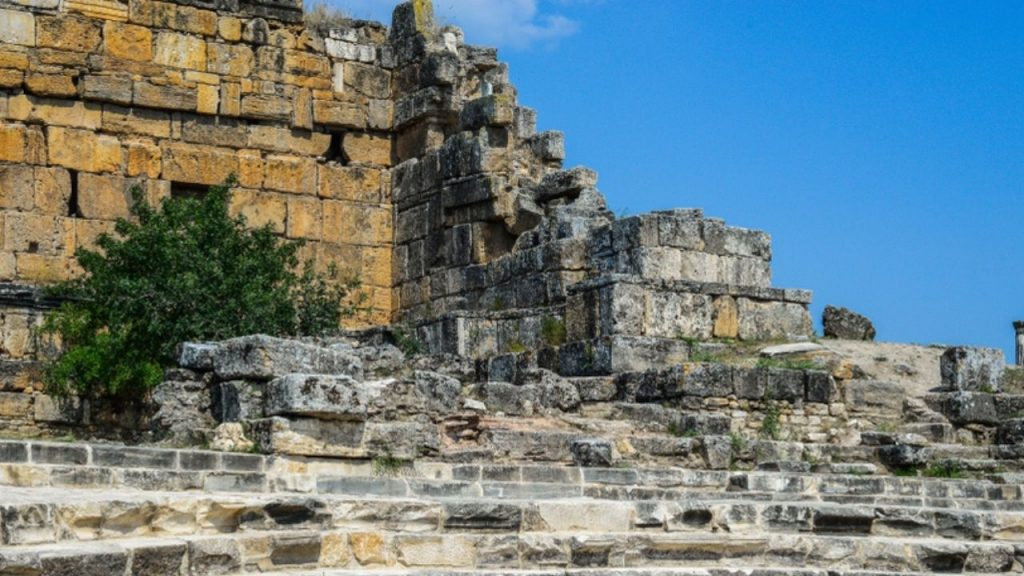
The Temple of Apollo was once the most sacred place in Hierapolis. As you know, Apollo is the god of music, poetry and fine arts of Greek mythology. However, he was also the archer god of Hierapolis. His arrows both healed and killed. The Temple of Apollo was a centre of prophecy. There were nearly 20 divination centres in Western Anatolia such as Didim, Pergamon and Miletus.
People would come to this temple and seek help from Apollo. Is there an epidemic ‘Go to Apollo!’ Is a new city to be founded ‘Well, go to Apollo!’ Rituals were organised here by priests. The Temple of Apollo in Hierapolis was built on an old temple. It is said that this was the temple of Cybele, the mother goddess of Anatolia. Therefore, it is also called ‘the place where Apollo and Cybele met’.
Plutonium
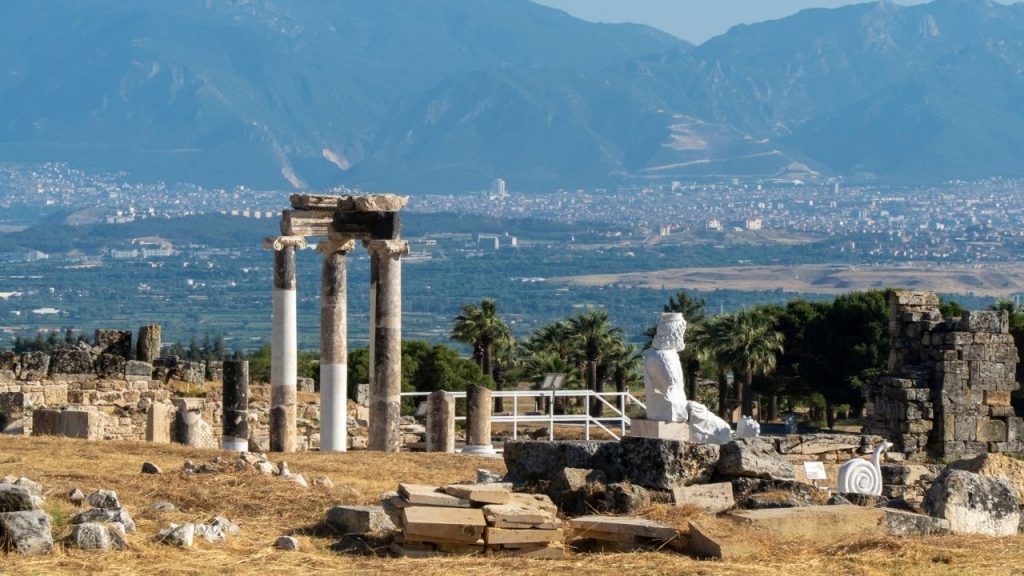
One of the most interesting stops in Hierapolis is Plutonium. Because it has remained a mystery for years. There is a cave at this point. In ancient times, this cave was thought to be the gate to hell. It was even called ‘Hell Gate’. Of course, they didn’t call it that for no reason. The animals that entered the cave died immediately. But the strange thing was that the priests who entered did not die.
In time, people who heard about it started to come to see the door to the Land of the Dead. It even turned into a trade. Sellers used to sell sacrificial animals at the entrance of the gate. Then the priest would enter with the purchased animal. The animal would die on the spot while the priest stayed alive. The reason why it is called Plutonium is that the name of Hades, the god of the Land of the Dead, is ‘Pluton’ in Rome. There is even a statue of Hades and the three-headed dog Kerberos on the platform above the cave.
Pamukkale Travertines
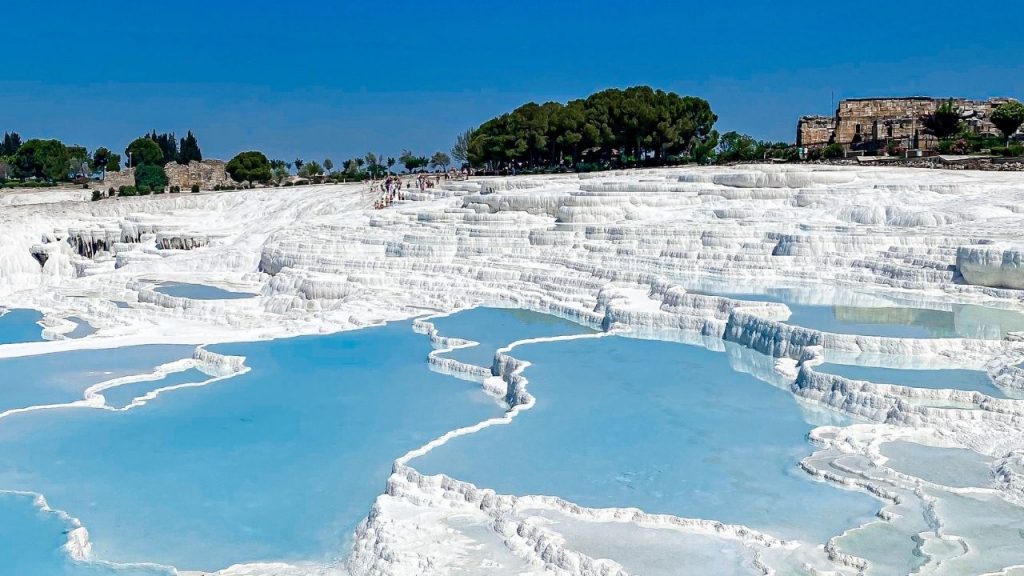
If you are coming to Pamukkale Travertines, come close to sunset. If you listen to our advice, a magnificent view will be waiting for you. Travertines resemble a sculpture made of water. The sculptor is the water itself. The water flowing here is 36-100°C. It has been healing people since ancient times because it is so rich in minerals!
This natural beauty, which resembles layered cotton, was the victim of unconscious tourism in the 90s. Maybe you remember that period. Then some of the travertines were closed. If you go to visit now, you will see that only a certain part is open. Even in some reserved parts, you can still take off your shoes and enter the water.
Wouldn’t it be nice to have a trip to Mugla while travelling to Denizli? Then you can read our Akyaka Travel Guide immediately! 😊

